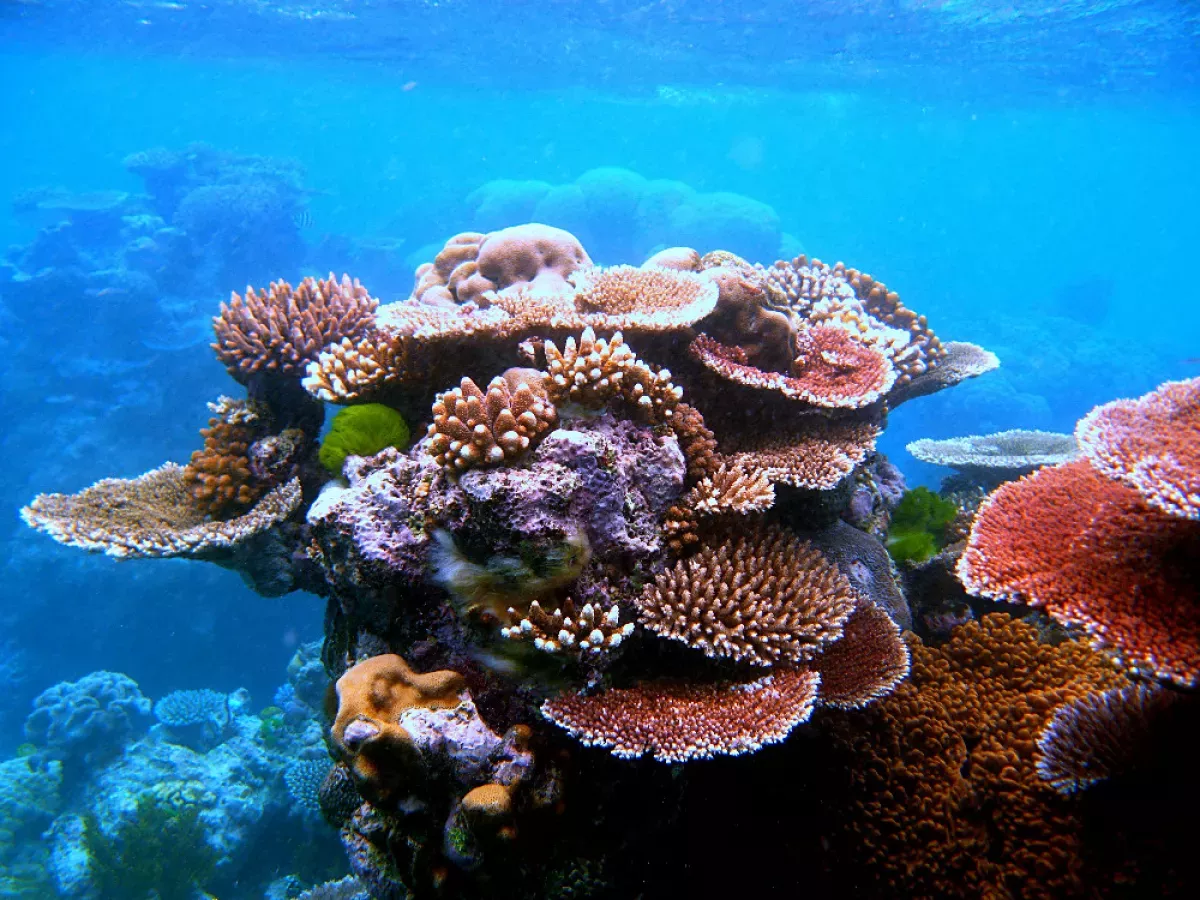Corals are marine invertebrates belonging to the Anthozoa subphylum within the Cnidaria phylum. They exist as colonies of identical polyps. Certain coral species are crucial reef builders in tropical oceans, secreting calcium carbonate to create a hard skeleton, contributing significantly to the formation of coral reefs.
1911: End of Qing Dynasty
In 1911, the Manchu or Qing Dynasty ended, marking the height of red coral's popularity in China, where it was almost exclusively reserved for the emperor's use.
1998: Worldwide coral reef death due to increased water temperature
In 1998, 16% of the world's reefs died as a result of increased water temperature.
2018: Evidence of phylosymbiosis between corals and their tissue and skeleton microbiomes revealed
A study published in 2018 revealed evidence of phylosymbiosis between corals and their tissue and skeleton microbiomes. The coral skeleton showed the strongest evidence of phylosymbiosis.
2019: Sanger sequencing capable of reproducing biologically relevant diversity
In 2019, Goldsmith et al. demonstrated Sanger sequencing was capable of reproducing the biologically relevant diversity detected by deeper next-generation sequencing, while also producing longer sequences useful to the research community for probe and primer design.
2020: Coral species identification and endangerment
In 2020, there were 2175 identified separate coral species, 237 of which are currently endangered. Adaptation and delineation continue to occur in species of coral in order to combat the dangers posed by the climate crisis.
2030: Projected destruction of coral reefs
It is projected that over 50% of the world's coral reefs may be destroyed by 2030; as a result, most nations protect them through environmental laws.
Mentioned in this timeline
India officially the Republic of India is a South Asian...
China officially the People's Republic of China PRC is an...
Climate change encompasses global warming and its far-reaching effects on...

A star is a self-gravitating luminous plasma spheroid The Sun...
Trending

9 months ago AJ Dybantsa Dunks on Angel Reese, Highlights McDonald's All American Game Roster

2 months ago Alex Bregman Enters Free Agency; Red Sox Interested, Projected $160M Deal?

7 months ago Urlacher recalls fierce battles with Rodgers, defining rivalry on 'Glory Daze' podcast.

3 months ago Kyle Tucker Player Props and Chicago Cubs' Distrust in Wild Card Series

9 months ago MobLand's Global Success: 8 Million Viewers, Record Debut on Paramount+, Guy Ritchie Series

Quinn Hughes is an American professional ice hockey defenseman and captain of the Vancouver Canucks Drafted seventh overall in he...
Popular

Carson Beck is an American college football quarterback currently playing...

XXXTentacion born Jahseh Dwayne Ricardo Onfroy was a controversial yet...
Curt Cignetti is an American college football coach currently the...

Stranger Things created by the Duffer Brothers is a popular...
WWE Raw a professional wrestling television program by WWE airs...

Marco Rubio is an American politician attorney and diplomat He...
